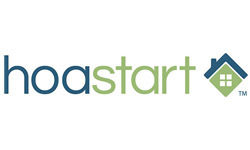If you live in a homeowners or condo association, you know the importance of communication. Whether you need to announce common-area maintenance, road repairs, or a community yard sale, or to advertise an upcoming election, you need a tool that can communicate important happenings to your residents.
Most of us recognize the need to accommodate these routine communications, but how do we handle emergencies? What about missing pets, legal disputes that require a copy of the bylaws, or a dues payment that debited from the wrong account and caused a property to go into collections?
It is the HOA’s responsibility to provide transparency and resources so residents can inquire about these types of subjects.
Let’s talk about the pros and cons of some of the tools that many communities use for communications.
• Facebook, Nextdoor
Pros: Free tools, widely adopted, user friendly
Cons: Sells your personal info, ad based, little control, becomes a forum for gripes & complaints
• Constant Contact, Mailchimp
Pros: Trusted messaging, branded templates, good company reputation
Cons: Expensive, single solution, admin driven (doesn’t support member interaction)
So, what can go wrong when you use these tools? If your neighborhood runs a Facebook or Nextdoor page, odds are that a resident of the community started it, not a board member. Bias creeps in and causes disharmony. Instead of providing an official voice for your HOA, these platforms become rumor mills rather than trustworthy sources.
Suppose your next-door neighbor, Judy, decides to start a Facebook or Nextdoor page for your HOA. She begins with good intentions, but gradually, politics and extreme attitudes seep into comments on her posts. Now Judy begins to delete comments that express views she doesn’t share, and eventually blocks residents from what was supposed to be a “community” page.
Quite frankly, a Facebook or Nextdoor page should never become the sole conduit to provide HOA news or represent official association positions. That “free” page can wind up costing you neighborhood harmony that money can’t buy back. We’ve seen these situations blow up time and time again.
If your organization decides to use Constant Contact or Mailchimp for official communications, these tools provide you with a great way to distribute official news and bulletins—but how residents report a streetlight that’s out? How do they contact the board to inquire about architectural changes? How do they let the neighborhood know that they’ve found a lost cat?
These examples show why states such as Florida, South Carolina and Nevada have begun to require HOA software. Those states understand that transparency is an association responsibility, but communication cannot be overlooked. All-in-one tools that satisfy these legal requirements also can include features such as an intuitive website builder, document storage, password protection, member directory, newsfeed forums, private chat, amenity reservations, event registration, secure online payments, custom input forms, and much more.
Suppose you’ve been using a Facebook page with Constant Contact, and now you find yourself migrating to another singular homeowner website platform, and another. These systems come with their own learning curves. As you begin to incorporate the additional tools you need to run your association, you not only find yourself logging into many accounts, but paying a premium for some of these services.
Along with internal communication and the need for the proper tools to foster those discussions, you also need to consider external communication. How will your vendors reach you or the property manager, especially if you run a self-managed HOA? How will potential new residents find information about the neighborhood before they buy, even before they hire a realtor? How will you establish a digital footprint on the internet and advertise where to find you?
An HOA website is the first step in the process of increased and steadfast communication. An all-in-one toolset is how you bring everything under one roof, to provide both transparency and communication. Once you’re up and running, you strategize where the calls to action reside on your site, including contact forms, inquiries about social committees, maintenance request forms, or surveys, polls, and online votes that allow the voice of the community to be heard.
Remember that communication is an art. The responsible way to approach discussions with association members is to be professional and diplomatic. Take emotion out of the equation. Facts are your friends.
When you establish an online home for incoming and outgoing communication and information, you open the road to all members through your own digital highway. This doesn’t have to be difficult, and we can show you how. Inquire with HOA Start and let us take you on a tour.

